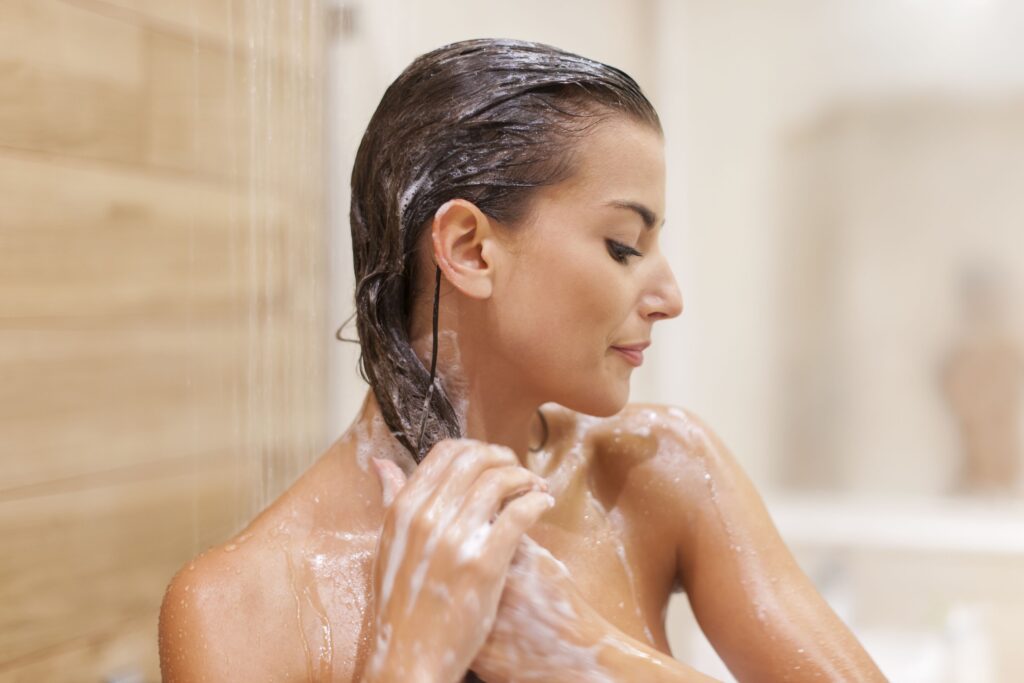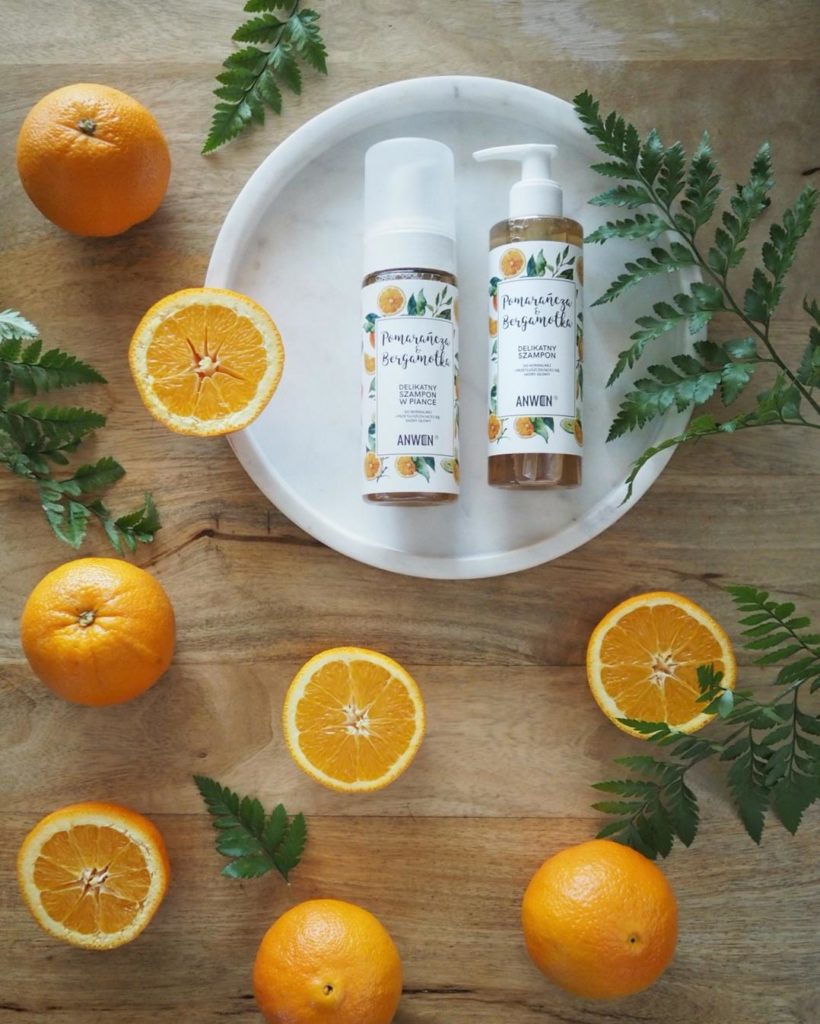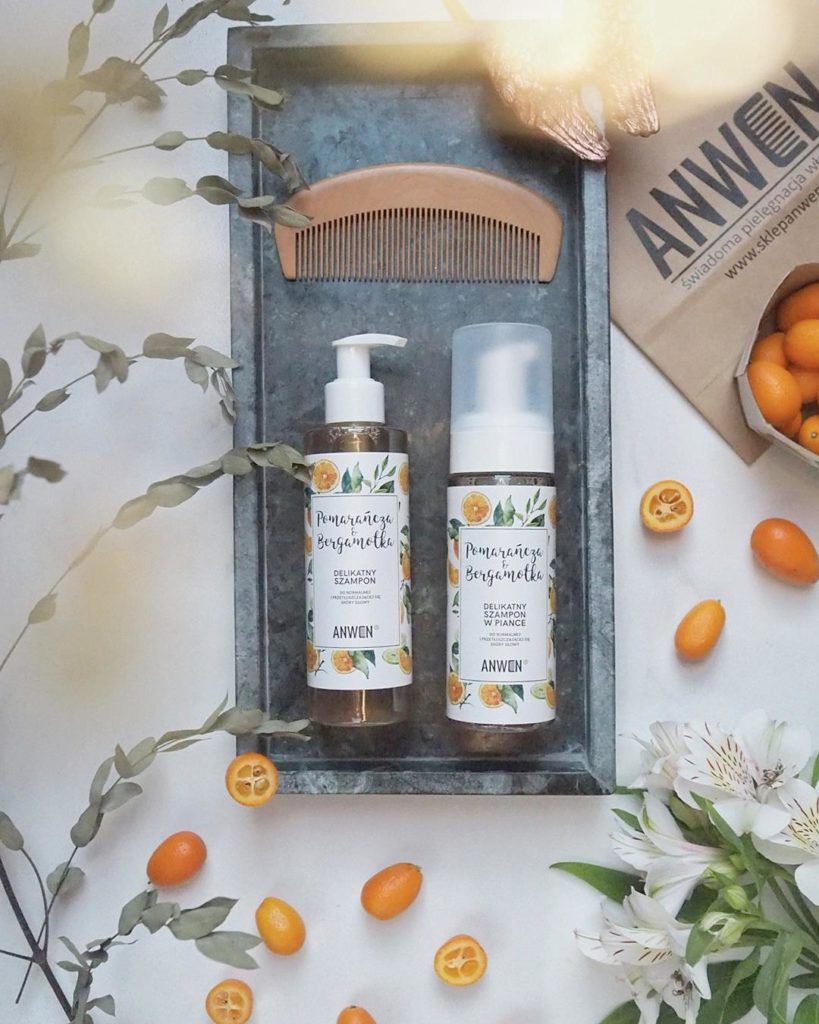What are detergents?
Detergents are substances in shampoos (but also laundry detergents, dishwashing detergents, and other cleaning products) designed to remove impurities. Therefore, there is no shampoo without detergents. Shampoos can be “gentle”, “natural”, as well as “pure”, “organic”, etc. We can name them with many other adjectives. But a shampoo, for its primary function, which is to wash the hair and scalp, must contain a surfactant or detergent. The marketing trick of replacing the dreaded term “detergent” with a less irritating one – “surfactant” turns out to be extremely effective, especially for those who just start their adventure with conscious hair care. And there’s nothing wrong with searching for information and deepening the knowledge. This blog also serves this goal.
Detergents, i.e., surfactants, act by emulsifying impurities found on the surface of hair and scalp. They enable the impurities to be easily removed from the surface of the hair or/and skin. It is possible due to detergents’ specific chemical structure, which consists of polar hydrophilic and non-polar hydrophobic parts. The hydrophilic part binds with water, and the hydrophobic one with accumulated impurities.
Different types of detergents
Since it is impossible to avoid detergents in shampoos, it is worth at least identifying them by checking the ingredients of hair care products. Keep in mind that detergents are highly diversified. While all have the same goal – to clean the hair and scalp – they differ in potency. It is crucial to know the different types of detergents to choose the most suitable product for the hair.
Until recently, SLS were notorious for their harmfulness. Until recently, Sodium Lauryl Sulfate was considered a harmful substance to be avoided. Numerous studies focused on this issue. “SLS-free” has almost become a promotional slogan.
Substituting SLS with a gentler, bust still form of detergent, Sodium Laureth Sulfate (SLES), became commonplace. Has this shift turned out to be beneficial? Tough to say. However, SLS and SLES must constitute a group of the “strongest” anionic detergents. In addition to these, there are also cationic, non-ionic, and amphoteric surfactants to consider. So let’s discuss them one by one.
Anionic detergents
The anionic detergents are named after their polar head that is charged negatively. This feature enables them to form stronger bonds, removing any impurities most effectively. They are essential in typical clarifying shampoos, designed to remove all those substances that may have built upon the hair (not just silicones!). Unfortunately, traditional clarifying shampoos remove dirt and our natural sebum, which can be very drying for skin and hair. In turn, more sensitive people cause skin irritation, itching, and burning. In shampoos, you will most often find them under the names:
Sodium Lauryl Sulfate (SLS),
Sodium Laureth Sulfate (SLES),
Sodium Coco-Sulfate (SCS),
Ammonium Lauryl Sulfate (ALS),
Ammonium Laureth Sulfate (ALES),
Sodium Cocoyl Sarcosinate,
Sodium Myreth Sulfate,
TEA-dodecylbenzenesulfonate,
Ethyl PEG-15 Cocamine Sulfate,
Dioctyl Sodium Sulfosuccinate,
Alkylbenzene Sulfonates,
Sodium Lauryl Sulfoacetate
Amphoteric detergents
This type of detergent cleanses the hair and scalp well but is slightly milder than anionic detergents. However, it can still irritate the scalp. Therefore, you should be careful with this type of detergent if you have a sensitive scalp or suffer from allergies. The same is often true of Cocamidopropyl Betaine, one of the most popular detergents. The substance can be found in almost every drugstore shampoo, body and face wash gels, and foams.
Moreover, this substance is an ingredient of most drugstore products designed for children. Amphoteric surfactants are often used in cosmetics to soften the effect of solid detergents. Examples of detergents in this group are:
Cocamidopropyl Betaine,
Coco Betaine,
Cocoamphoacetate,
Cocoamphodipropionate,
Disodium Bocoamphodiacetate,
Disodium Bocoamphodipropionate,
Lauroamphoacetate,
Sodium Cocoyl Isethionate,
Sodium Cocoamphoacetate.
Non-ionic detergents
The polar part of this type of detergent has no charge (neither positive nor negative), forming a weaker bond. As a result, they are milder than anionic detergents, but they still clean quite effectively. They should not irritate. They are well tolerated by the skin and by the mucous. Their advantage is also the possibility of complete biodegradability. Because of these features, they are very often used in organic cosmetics. This group of detergents can be included, among others:
Coco Glucoside,
Decyl Glucoside,
Lauryl Glucoside,
Laureth-10 (Lauryl Ether 10),
Laureth-23,
Laureth-4,
PEG-10 Sorbitan Laurate.
Cationic detergents
This group of detergents is not easy to evaluate unequivocally. Due to their positive charge, cationic surfactants primarily have an anti-static and conditioning effect on hair (which is why they are often found in hair conditioners). Still, they also have a mild cleansing effect. They are the gentlest of all types of detergents, but they also clean the weakest. They work best on dry, very damaged, or curly hair. Look for these ingredients in hair care products if you wash your hair with conditioners (co-washing method). This group of detergents includes:
Behentrimonium Chloride,
Benzalkonium Chloride,
Cetrimonium Chloride,
Tricetyldimonium Chloride,
Quaternium-15,
Quaternium-18 Bentonite,
Quaternium-18 Hectonite,
Quaternium-22,
Behentrimonium Methosulfate.
The presented classification of detergents only seemingly simplifies the problem. However, one should remember that detergents within each group differ, even among the anionic detergents, fragile substances such as Sodium Cocoyl Glutamate or Sodium Lauroyl Methyl Isethionate. The diversity is a result of the structure of the molecules. For example, non-polar tails can have different lengths, be straight, branched, or even form rings that can affect their performance. In general, the differences between detergents are because they are composed of various substances. SLS and its derivatives are based on sulfur. In comparison, SCG is the sodium salt of coconut fatty alcohol glutamic acid.

So how to choose a shampoo?
First of all, you should always pick a shampoo for your scalp instead of for your hair. This is probably the most common mistake people make when choosing the proper hair care. The primary purpose of shampoo is to cleanse your scalp, and the type of your scalp should determine the choice of shampoo. Is it sensitive? Or maybe it doesn’t react at all to stronger detergents? Is your scalp excessively oily? Or, on the contrary, is it dry and itchy? You should also bear in mind that the scalp, just like the skin on your face, changes according to various factors. It is essential to follow your scalp’s condition and adjust the shampoo according to its needs.
If one shampoo isn't enough, then how many do I need?
Minimalists will not be happy. However, conscious care requires an attentive approach and response to the needs of the scalp and hair. With shampoo, as already mentioned, the condition of the scalp is the key. Having two shampoos seems to be an absolute minimum. First, a mild one should be used for frequent washing of the hair and scalp. For this purpose, we recommend one of Anwen’s gentle shampoos [1], [2], [3], [4].



The second shampoo, let’s call it “special tasks”, should purify strongly. This shampoo should be used once a week or even less frequently. The first shampoo will not have an aggressive effect on the scalp or hair, thanks to milder detergents. So it will not dry out the hair. However, certain substances such as silicones, certain oils, and even macromolecular proteins, which can build up on the hair, may require stronger shampoo. Once in a while, you need a shampoo for special tasks. Anwen’s Mint It Up exfoliating shampoo is a good choice. Thanks to its fine particles, the shampoo cleanses your scalp and hair perfectly. However, this shampoo is not for everyday use as it can irritate the scalp and dry out the hair.
Anwen Team

